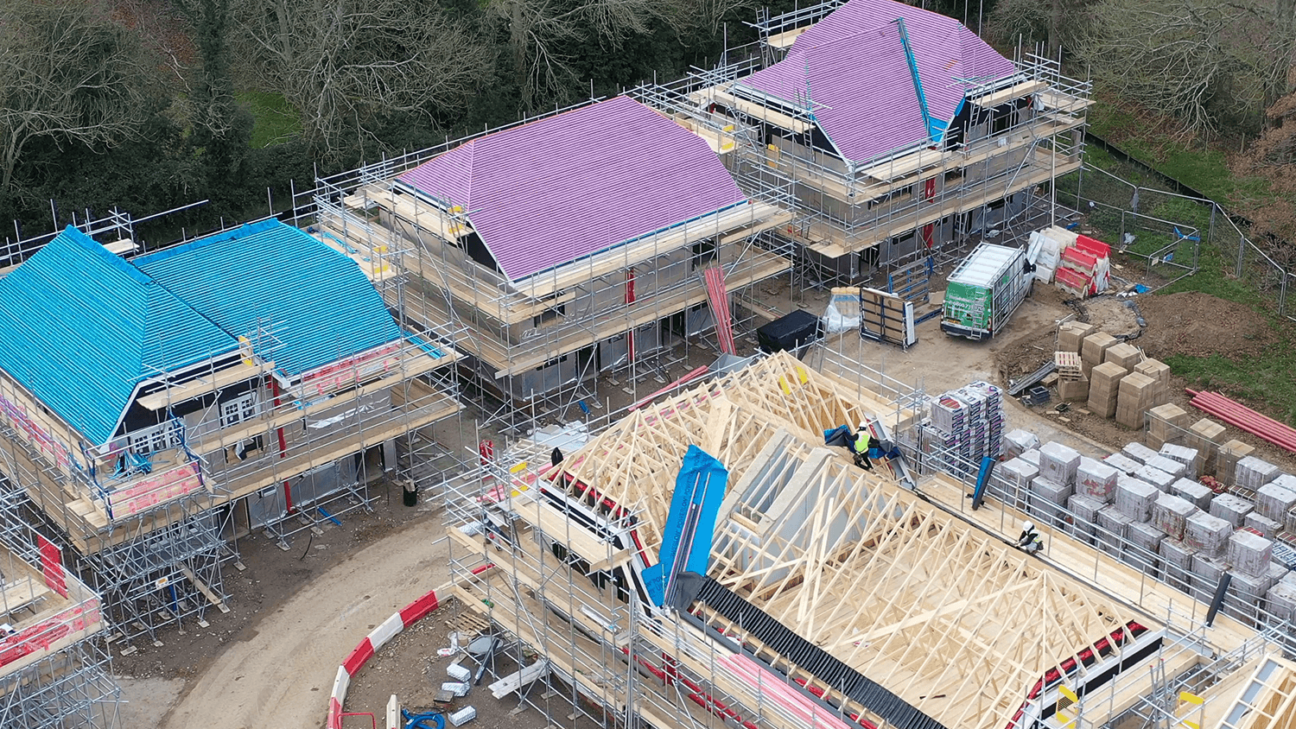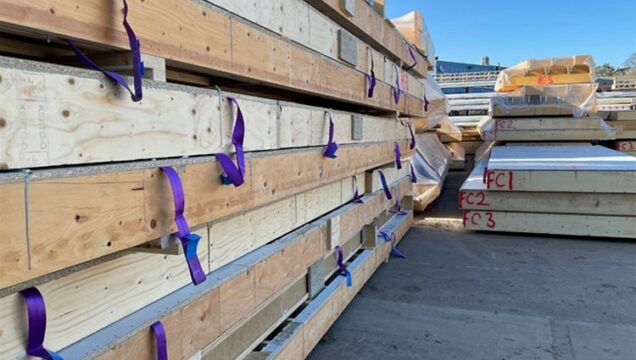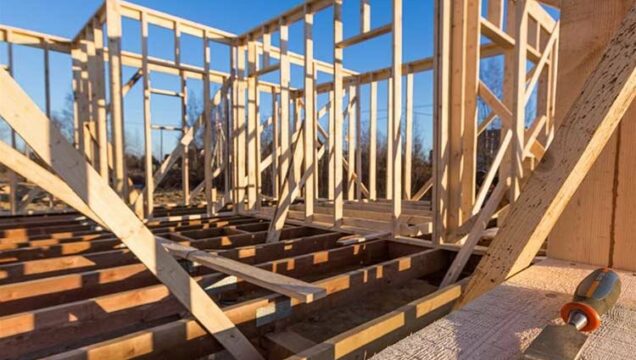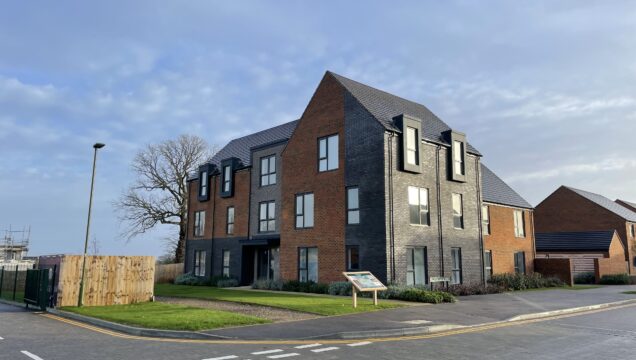

In December 2023, the Government set out a plan to increase the use of timber construction amongst homes and buildings in England.
Currently, England has significantly lower rates of buildings with timber compared to other countries in the UK and across the globe. The built environment is accountable for 25% of the UK’s total greenhouse gas emissions, however, by choosing timber frame construction, these emissions can be reduced.
Therefore, this is a huge opportunity for the government to reach net zero by 2050. But why is timber frame more sustainable?
//Reasons Why Timber Frame is More Sustainable Than Masonry Construction
Reduced Carbon Cost
As one of the UK’s biggest carbon emitters, the construction industry needs to consider materials when it comes to carbon cost. Masonry construction, for example, uses materials such as cement, concrete, steel and bricks for construction which require significant levels of CO2 to manufacture, transport, use and dispose of them.
600kg of carbon is released for every tonne of cement produced and contributes to at least 8% of global carbon emissions. Whereas, timber does not release carbon, it actually removes it from the air and stores it. 50% of the dry weight of timber is carbon which is why the material is known as a carbon store; it locks it away for the duration of the timber’s life and any products made from this.
Embodied Carbon
It’s important to take a closer look at embodied carbon, as this includes all of the emissions created from the sourcing of materials to the construction process and the lifespan of the building.
Timber frame construction process produces 40% less carbon than masonry construction because it requires less energy to construct and they are built off-site in a controlled environment.
As well as the process of timber frame construction, the final product and total lifespan of the timber frame building exceeds the embodied carbon level of masonry construction. So much so, 4-bed detached house built using timber saves 5 tonnes of CO2when compared to blockwork.
A Circular Economy
Traditional construction practices are commonly based on a linear economy: Take, Make, Waste. Sourcing finite materials, manufacturing and constructing them, then taking waste material to landfill. Between 10-15% of building materials are wasted during the construction process and, due to non-renewable resources being used in masonry construction, there is difficulty disposing them at the end of their lifecycle too.
A circular economy replaces the linear economy, providing a much more sustainable solution; ideally, no materials are ever wasted. Its aim is to use renewable resources and encourage recycling to reduce energy, greenhouse gasses and waste.
Timber frame construction adopts a circular economy with the ability to recycle and reuse any waste into additional building material, mulch, pulp or fuel. At Pinewood Structures, we use our waste timber as biofuel to heat our factory. Timber frame buildings are also able to be dismantled when their lifecycle comes to an end.
Renewable Resource
Masonry construction relies on finite, non-renewable materials. Cement, concrete, steel and bricks are resource-intensive materials that contribute to the depletion of natural resources. Timber is a truly renewable building product; when trees are cut down to create timber materials for construction, they are replaced by planting more trees. Plus, if the forests hold a PEFC Forest Certification, this provides evidence of sustainable forest management and practices.
Although the UK imports 80% of the timber it consumes and is the second largest importer of timber in the world, the new Government initiative plans to change this. The Government have committed to providing sustainably managed forests in the UK to create a long-term supply of timber. This will ultimately reduce our reliance on imported timber and reduce transport costs and emissions, further enhancing the credentials of timber as a construction material.
In order to achieve net zero by 2050, as part of the England Trees Action Plan, the Government will be increasing tree planting rates across the UK to 30,000 hectares a year. As well as this, they introduced a statutory tree and woodland cover target to increase the tree canopy and woodland cover in England to 16.5% by 2050. More trees will mean more availability of locally grown resources for timber frame construction.
//Timber Frame is More Sustainable
The government has recognised the importance of timber frame construction in achieving net zero by 2050 and that it is the future of sustainable construction. As you can see, it’s one of the most viable ways of building houses more eco-consciously. This study suggests turning to timber frames could save 100 billion tonnes of CO2 emissions by 2100.
//Interested?
Timber frame construction is more than just sustainable and can benefit the industry in a number of other ways too – from easing pressures on supply chains, to increasing the speed of construction and more.
Pinewood are able to provide many timber frame building solutions;
- Timber frame walls
- Timber frame floor joists
- Timber frame roofs (inc. our One-Roof™ system)
Choose a trusted company for your timber frames. Pinewood Structures have been trusted by the industry for over 40 years to deliver on our promises – Call us today to discuss your requirements and find the timber frame solution for your needs.


